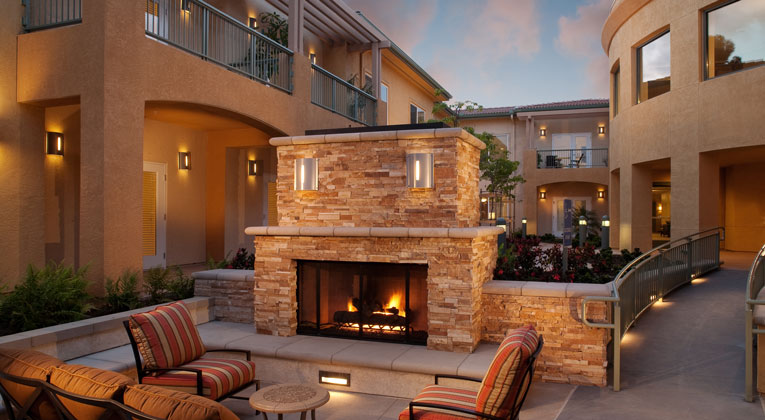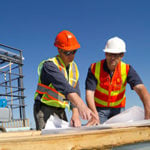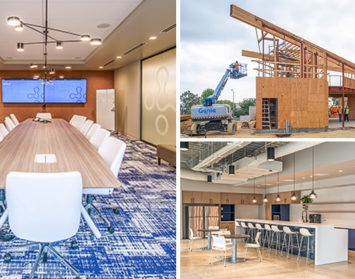We have all heard the numbers: each day 10,000 baby boomers turn 65. However, here are a few statistics that you may not know.
- According to the Centers for Medicare and Medicaid Services, 81 million beneficiaries will utilize these programs in 2030.
- Approximately 70 million baby boomers are within 10 years of needing additional healthcare offerings beyond those provided at traditional medical facilities.
Certainly, acute care will occur predominantly in a hospital or clinical setting, however, millions of Americans will require nursing and supervised healthcare delivery in a residential setting.
In many cases, an individual may not have the ability or option of continuing to reside in their home, which necessitates a senior living option.
However, seniors and their families who want Senior Care seem to constantly look for improved residences as compared to the older options that exist in the marketplace.
There is a continual push in the industry to make facilities more residential and less institutional. While older facilities tend to focus solely on meeting the institutional criteria set forth by operating manuals, the contemporary residences definitely meet the criteria but also establish a progressive experience that feels more residential and raise the bar for the marketplace.
It is time for a modernization of senior living facilities, and that begins with for-profit and non-profit developers bringing fresh and creative thinking to the design of projects, with an emphasis on infusing residences with warmth and hospitality. So what types of amenities and creative architectural solutions are developers including in the modern senior care facility?
New Approach
A developer must consider a number of factors into the process including: architecture and interior, hospitality, technology and location. As demand grows for upgraded senior care spaces, the planning and programming phase of a project becomes critical.
More Home, Less Institution
Seniors want a home-like setting with privacy, which means private rooms with three-fixture baths to include a sink, toilet and a shower. The amenity rich common spaces, should be easily accessible to all residents with back-of house support functions hidden from view.
A major consideration most residents request is for builders to incorporate more sustainable design features, such as abundant natural light, improved indoor air quality, energy and water conservation elements, views and access to nature, gardens and water.
A new facility should also deliver an experience for residents. Developers can take a page from the hospitality industry, which provide robust amenities, colorful rooms and spaces, concierge services and culinary and entertainment options.
Consider a resort-type environment, which will buoy the spirits of residents and the 24-hour caregivers on staff. While senior care facilities exist to support their residents, operators are taking steps to include features in their design that add to the well-being of the caregivers. This is a similar mindset to that of a CEO creating a more engaging workspace for their team.
Technology
It seems that office spaces, multi-family structures, retail environments and single-family homes utilize technology, so why not introduce 21st century technology into senior living facilities?
Internet connectivity of course, but also technology that enhances the resident experience and helps increase safety. For example, wireless pendants that activate a phone in case a patient falls, health-monitoring devices that can be applied to a resident as a motion-detector, devices that monitor vital signs or even manage medications.
Healthcare innovation and digital advancement can transform an individual’s experience and help keep them connected to family and friends and be engaged with their community.
Location, Location, Location
Developers are becoming more attune to finding locales that are convenient for families to visit their relatives. Locating projects near metropolitan areas, or with easy freeway connectivity has become a key determinant.
Another interesting trend from a location perspective–builders can orient projects in city centers, as more seniors migrate to urban core areas to enjoy the richness of a metro lifestyle, and amenities such as having a doorman and home meal deliveries.
Land and construction costs are certainly some factors when considering location, however, developers are turning to adaptive-reuse as a means of mitigating escalating expenses.
The demand for modern senior care facilities will only increase over the coming two decades. The Hughes Marino team has advised clients on the multiple ways they can responsibly design engaging and thoughtful environments for their residents and employees. Trends are consistently evolving while one goal consistently remains: continue to create comfortable yet exhilarating environments that attract new residents, provide comfort, and retain operators in a meaningful and cost-conscious manner. Our team has a lengthy successful track record advising our clients and leading projects that integrate these three tactics and hit all schedule and budgetary milestone. We’re here to help!
Hughes Marino’s industry leading Construction Management team has unmatched expertise in every type of commercial building project from tenant improvements to ground-up build-to-suits. With decades of experience in California and beyond, our project managers, engineers and LEED APs offer practical insights for the construction management professional.











